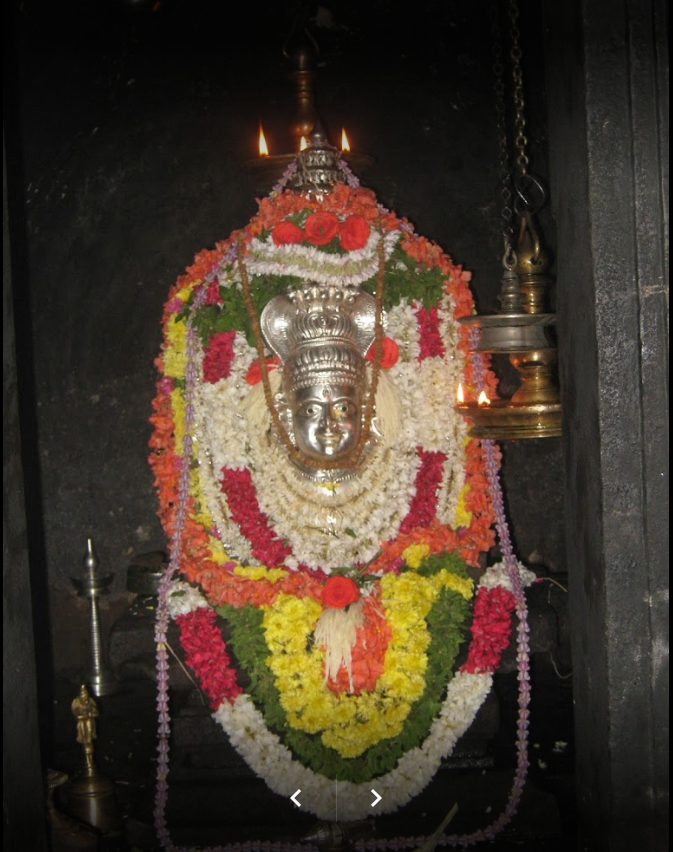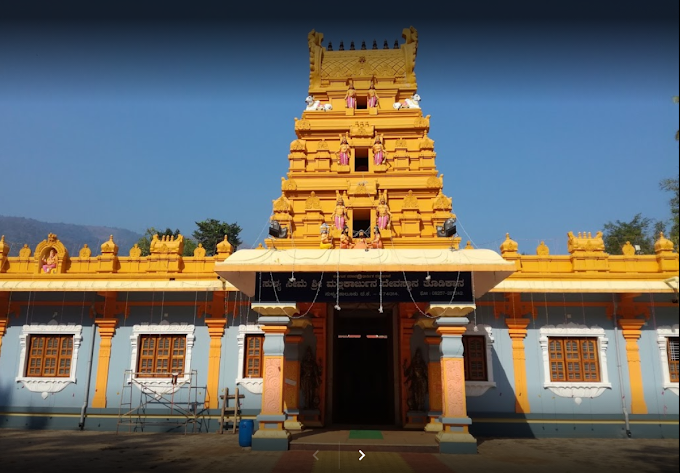About
Long Ago the place where the temple is situated now was a dense forest habituating and inspiring many Saints to perform Meditation. Down the lane, a Maharshi named ‘Trunabindhu’ arrives to the place, and the place motivates him to perform meditation. But, to perform his pre-meditating rites like bathing, chanting and other rituals he had to find a river’s bank; ironically, the Maharshi was unable to locate River Cauvery who was flowing in disguise at the same place. Hence, the Maharishi, prayed lord Narayana, for years together. At lat after long years of severe offerings and prayers lord Narayana, presented himself in front of the Maharishi, and shows him the river Cauvery who was flowing in disguise. Also, lord Narayana informs the Maharshi that in Tetrayuga, lord Shrirama will arrive there to fulfill his wishes; lord Narayana disappears by saying these words to the Maharishi. The Maharshi then uses the river and its bank for his meditation and prayers.
The continued version of the Sthala Purana narrates a story of a hunter couple, Chuncha and Chunchi, whose occupation was to threaten the poor people who visited the place and rob them to the core, later, the couple murdered the visitors and ate human flesh. As they saw the Maharshi, they beg the pardon for their sins which was a bane for them in their earlier birth. The Maharshi reveals the truth about their earlier life that they were a Brahmin couple in kashi, who had an oil bath on the No moon day and so they were cursed by the lords. The solution for the salvation was that after some time there arrives a poor man who requests for a small piece of land to cook for him, once the hunter couple gives him the land their curse will be sorted out and they will have salvation. The Maharshi also tells that the place will be called after their name, Chunchankatte, which it is called presently.
Later in Tetrayuga, Shrirama along with his brother Lakshmana comes to the place and insists Lakshmana to use Dhanushkoti bow and split the huge rock into two halves. As directed Lakshmana does so and still the pace called Dhanushkoti. When Lakshmana uses the bow Dhanushkoti the rock splits and river Cauvery blew up profusely with huge noise. As Shrirama listens to the thunderous roaring of river Cauvery, he curses her that “a woman should not have so much of raising voice” and so in the garbhagudi, the place where the idols of the lords are installed, we wouldn’t the noise of the falls which either wise is heard 10 kms away from the location.
Once it happened so that while Sita was having her bath Lakshmana infatuates her in his mind. Sita feels embarrassed and feels hurt and she flows around in the form of water while she was running, she rocks to a huge stone and splits into two different paths which is now called ‘Sitamadilu’. The place where Sita took her bath is believed to be very scared and it is said that till today, we can sense the oiliness in the water, soap nut powder and turmeric and other much believed symbols of a married woman.
Later trunabindu Maharshi asks Sita to stand at the right of Shrirama which was uncommon, as Sita used to stand to the left of Shrirama all the time. Hence, it is a unique feature of the place that Shrirama is seen to the left of Sita and Lakshmana to the left of Shrirama. Shrirama calls Lakshmana to bow and arrow which saddens Anjaneya and him separates himself from Shrirama and stands afar. Shrirama pacifies Anjaneya he and Lakshmana are like his brothers and he asks Anjaneya to stand afar from the garbhagudi, where we won’t see the Anjaneya which is commonly seen wherever we see Shrirama. But it is rule that people visit Anjaneya after bath and then visits Sitarama.
Contact
Sri Rama Temple,
Chunchanakatte, chu.
Katte Hobli, K.R.Nagar
Tq. Mysore Dist.
Email:thkrn@Yahoo.com,Thkrn-rd-ka@nic,in.
Tel. No. 08223-262234
Fax.08223-262371















